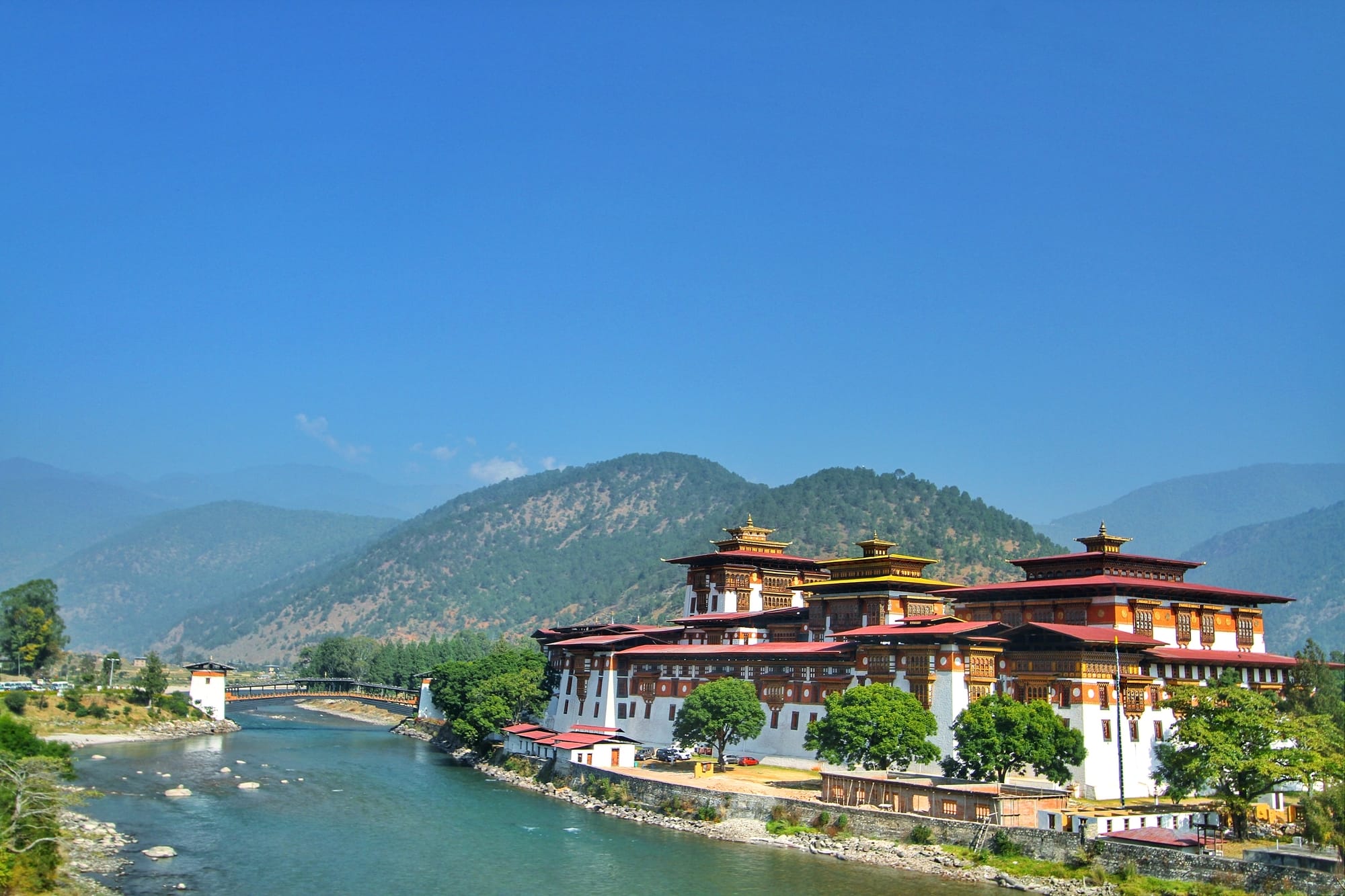Paro is nestled over 2000 meters above sea level on the foothills of the Himalayas\' high peaks. It is a must-see city for all travelers since it is where the international airport is located, but not only! You can also visit the National Museum and the most famous monastery in the country, Taktshang. To get ►
Paro is nestled over 2000 meters above sea level on the foothills of the Himalayas\' high peaks. It is a must-see city for all travelers since it is where the international airport is located, but not only! You can also visit the National Museum and the most famous monastery in the country, Taktshang. To get there, you must climb about 700 steps surrounded by a breathtaking landscape. But it is also possible to reach it on horseback. A little higher up is a cave called the Tiger\'s Nest. According to legend, Guru Rinpoche, known for introducing Buddhism to Tibet and Bhutan, reached it on the back of a tiger in the eighth century. The place was already considered holy at that time.
A few dozen meters away is the capital, Thimphu. There, cafes, restaurants, and shops are waiting for you. Awaken your senses by strolling through the city\'s century-old market, a meeting place for many of the country\'s merchants. Whether meat, fruits, vegetables, or spices, you will find your happiness. You can also visit Changlimithang Stadium to watch a match of archery, the national sport. The dzong of Trashi Chhoe, a religious building that has become the center of power today, and the Memorial Chorten, a place of pilgrimage, are also must-see places.
Continuing your way northwest, you will come across the highest village in the country, Laya. Take part in the Royal Highlander Festival, a local festivity that brings together yak herders and Layap villagers. In this village, you can see them dressed in traditional clothes, wearing pearl jewelry and unique conical hats as accessories.
Before heading west to the country, spend some time in the country\'s former capital, Punakha. Visit the Temple of Fertility, known as Chimi Lhakang. Blessed by Buddhist leader Drupa Kunley, nicknamed \The Saint of 5,000 Women,\ you\'ll find a mix of lust, history, sex, and sacredness. Take the opportunity to visit the city\'s dzong, the king\'s coronation site and winter residence. Built at the confluence of the Pho River, which characterizes male strength, and the Mo River, which designates female energy, the dzong was the country\'s political, administrative, and religious center. You can also attend the Punakha Festival, where a theatrical re-enactment of the battle against Tibetan forces in the 12th century will be offered.
A little further in the center of the country, on the edge of the Black Mountains National Park, is the Phobjikha Valley. You can see black bears, sambars, foxes, leopards, and many species of birds. In particular, it is the ideal place for observing black-necked cranes that migrate there during the winter. Take the opportunity to participate in the Gangtey Tshechu festival, which takes place every year in autumn according to the lunar calendar and lasts 3 days. At the same time, you can visit the monastery of Gangtey, where the festival takes place.
Once in the north of the country, stay in the Bumthang region. You will find the oldest Buddhist sites in the country, including the Jambay Lakhang temple, built in the seventh century, or the Kurjey Lakhang, a monastery famous for housing the imprint of the body of Guru Rinpoche in one of his caves. You can also visit the Swiss farm in Jakar, where you can taste the first beer made in Bhutan, Red Panda Beer. Before leaving, breathe in the Ura Valley\'s sweet scent of wildflowers and dog roses.
At the crossroads of several national parks, in a wild sanctuary that brings together the local fauna and flora, you can end your trip in style in Lhuntse. It is an important pilgrimage site, home to many sacred sites, including the Lhuntse dzong. This region is known for its art of weaving the country\'s finest textiles, which are used to make Kira, a traditional dress worn by Bhutanese people. There, you can taste Ara, a local alcohol made from rice or fermented cereal. ◄
